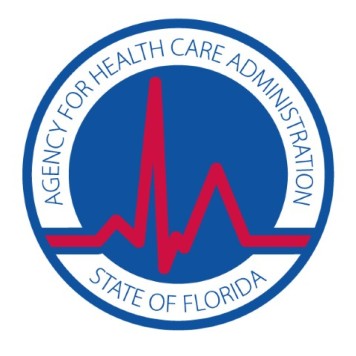
AT A REGULAR MONTHLY MEETING OF THE INDIAN RIVER COUNTY HOSPITAL DISTRICT (IRCHD) ON AUGUST 18, 2016, THEN CFO OF THE INDIAN RIVER MEDICAL CENTER (IRMC) GREG GARDNER, SPOKE ABOUT THE REIMBURSEMENT RATES PAID TO HOSPITALS BY MANAGED CARE ORGANIZATIONS SUCH AS HMO’S AND PPO’S, AND THE “EGREGIOUS” DISPARITY IN THEIR PAYMENTS TO DIFFERENT HOSPITALS.
At that meeting, Mr. Gardner said 80 percent of IRMC’s revenue is attributable to Medicare and Medicaid, who pay hospitals equitably with the same rates for patient medical care.
The remaining 20 percent of IRMC revenue, approximately $ 50 million is attributable to managed care contracts with insurers such as Blue Cross, United Healthcare, Cigna and Aetna. $ 35 million of the $ 50 million is paid by Blue Cross.
But Blue Cross pays the Sebastian Medical Center, Sebastian FL twice what it pays IRMC for its services, and it pays Lawnwood Medical Center (LMC), Ft. Pierce, FL three times as much; which he referred to as “egregious” amounts.
Examples of the commercial payment rates as a percent of Medicare for the other nearby hospitals in Indian River and St. Lucie County are: Hospital A: 298%; Hospital B: 397% and Hospital C: 363%. IRMC is paid 141%, although the average for the State of Florida is 146%. (Source: AHCA 2014 Florida Hospital Uniform Reporting System.)
When and how did this come to light?
On April 14, 2016 Florida Governor Rick Scott approved House Bill 1175 regarding Transparency in Health Care, with revisions to Chapter 395, 2016 Florida Statutes, s. 395.301, Price transparency… to be effective July 1, 2016.

Florida Governor Rick Scott
The bill requires the Agency for Health Care Administration (AHCA) to contract with a vendor for an all-payer claims database (APCD), which provides an online, searchable method for consumers to compare provider price and quality, and a Florida-specific data set for price and quality research purposes. The bill requires insurers and HMOs to submit data to the APCD, under certain conditions.
It creates pre-treatment transparency obligations for hospitals, ambulatory surgery centers, health care practitioners providing non-emergency services in these facilities, and insurers and HMOs. Facilities must post online the average payments and payment ranges received for bundles of health care services defined by AHCA.
Chapter 395, 2016 Florida Statutes, s. 395.301:
“1 (a) Each licensed facility shall make available to the public on its website information on payments made to that facility for defined bundles of services and procedures. The payment data must be presented and searchable in accordance with, and through a hyperlink to, the system established by the agency and its vendor using the descriptive service bundles developed under s. 408.05(3)(c). At a minimum, the facility shall provide the estimated average payment received from all payors, excluding Medicaid and Medicare, (emphasis added) for the descriptive service bundles available at that facility and the estimated payment range for such bundles. Using plain language, comprehensible to an ordinary layperson, the facility must disclose that the information on average payments and the payment ranges is an estimate of costs that may be incurred by the patient or prospective patient and that actual costs will be based on the services actually provided to the patient.”
According to Mr. Susi and Lewis Clark, IRMC VP Marketing/Corporate Communications, it was this law that opened the IRMC’s eyes as to the disparity in reimbursement rates through the requirement that “each licensed facility shall make available to the public on its website information on payments made to that facility for defined bundles of services and procedures.”
The database calculates prices based on data from actual insurance claims that have been paid to Florida health care providers.
On January 27, 2017, the Florida Agency for Health Care Administration announced the selection of the Health Care Cost Institute (HCCI) as the vendor partner that will create the online health care transparency tool (database) for Florida where consumers can find and compare the price of common health care services in their area.

Now, how is IRMC going about renegotiating its reimbursement rates?
IRMC is currently in discussions with three of their largest insurers after having notified them that they want to renegotiate their contracts , and unless they can, IRMC may go “out-of-network,” which means if someone is admitted to the IRMC and it is not “in-network,” their out of pocket costs would be considerably higher. Mr. Susi indicated this potentially presents some risks, but he is very optimistic about negotiating higher rates with Blue Cross and United Healthcare.
The risks of becoming out-of-network would be that many patients would seek out another hospital where they would be “in-network.” This would affect IRMC patient revenues.
Securing an increase would likely come in the form of incremental increases. Some will likely come this year. But an annual incremental increase in private payer reimbursement rates may well not be enough to IRMC’s viability to increase its revenues, in light of its $ 4 million loss in the first quarter of of its current fiscal year, as reported in Vero Beach 32963, in an article by Michelle Genz on February 2, 2017.
Furthermore, in an Insight Editorial in the same issue, Dr. Val Zudans pointed out that IRMC’s “days cash on hand (DCOH) is down to 50. Loan covenants require 60 DCOH. Further, he said: “IRMC and the taxpayer owners could be looking at a loss of over $ 15 million dollars this fiscal year is this trend continues. This would require a taxpayer bailout.”
In an article in Becker’s Hospital Review on September 16, 2010, Jamie On laid out “Four Ways to Gain Leverage in Payor Contract Negotiations.”
- Demonstrate achievement in quality metrics
- Work with payers to achieve operational efficiency on both sides
- Consider alternate reimbursement methods
- Retrospectively analyze trends in case volume
On a related note related to quality metrics, although this may not be the case at IRMC, just now in January, 2017, The American Hospital Association’s Center for Health Care Governance wrote an article entitled “Hospital Board and Management Practices are Strongly Related to Hospital Performance and Clinical Quality Measures.”

“National policies to improve health care quality have largely focused on clinical provider outcomes and, more recently, payment reform. Yet the association between hospital leadership and quality, although crucial to driving quality improvement, has not been explored in depth.
We collected data from surveys of nationally representative groups of hospitals in the United States and England to examine the relationships among hospital boards, management practices of front-line managers, and the quality of care delivered.
First, we found that hospitals with more effective management practices provided higher-quality care. Second, higher-rated hospital boards had superior performance by hospital management staff. Finally, we identified two signatures of high-performing hospital boards and management practice.
Hospitals with boards that paid greater attention to clinical quality had management that better monitored quality performance. Similarly, we found that hospitals with boards that used clinical quality metrics more effectively had higher performance by hospital management staff on target setting and operations.
These findings help increase understanding of the dynamics among boards, front-line management, and quality of care and could provide new targets for improving care delivery.”
We have extensively researched whether or not private payers negotiating different reimbursement rates with different hospitals is illegal in any of the United States and have not found it is illegal anywhere.
We did, however, find this September 12, 2012 article in The New England Journal of Medicine, entitled “A Systemic Approach to Containing Health Care Spending.”

“Under a model of self-regulation, public and private payers would negotiate payment rates with providers, and these rates would be binding on all payers and providers in a state. Providers could still offer rates below the negotiated rates.
We suggest that the federal government award grants to states to promote this self-regulation model. States could phase in this model, one sector (e.g., hospitals) at a time. To receive grants, states would need to publicly report measures of quality, access, and cost and would receive bonus payments for high performance. For providers, the negotiated rates would be adjusted for performance on quality measures, which should be identical for public and private payers.”
Perhaps the legislature needs to craft legislation to this effect.
And then, as Mr. Garner angrily said in his final remarks on August 18, 2016, the public needs to be made aware of the rate disparities and to “gravel, embarrass and shame” the managed care providers.